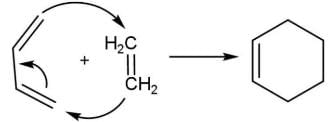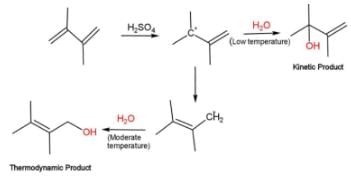Test: Dienes - JEE MCQ
Test Description
10 Questions MCQ Test - Test: Dienes
Test: Dienes for JEE 2025 is part of JEE preparation. The Test: Dienes questions and answers have been prepared
according to the JEE exam syllabus.The Test: Dienes MCQs are made for JEE 2025 Exam.
Find important definitions, questions, notes, meanings, examples, exercises, MCQs and online tests for Test: Dienes below.
Solutions of Test: Dienes questions in English are available as part of our course for JEE & Test: Dienes solutions in
Hindi for JEE course.
Download more important topics, notes, lectures and mock test series for JEE Exam by signing up for free. Attempt Test: Dienes | 10 questions in 15 minutes | Mock test for JEE preparation | Free important questions MCQ to study for JEE Exam | Download free PDF with solutions
Test: Dienes - Question 1
Direction (Q. Nos. 1 - 6) This section contains 6 multiple choice questions. Each question has fo ur choices (a), (b), (c) and (d), out of which ONLY ONE option is correct.
Q. The correct increasing order of heat evolved when 1.0 mole of each of the following is hydrogenated completely is

Detailed Solution for Test: Dienes - Question 1
Test: Dienes - Question 2
Consider the following transformations.

Q. Which reaction sequence will bent bring about the above transformation?
Detailed Solution for Test: Dienes - Question 2
Detailed Solution for Test: Dienes - Question 3
Detailed Solution for Test: Dienes - Question 4
Detailed Solution for Test: Dienes - Question 5
Test: Dienes - Question 7
Direction (Q. Nos. 7 - 10) This section contains 4 multiple choice questions. Each question has four choices (a), (b), (c) and (d), out of which ONE or MORE THAN ONE are correct.
Q. Predict product(s) in the following reaction.
Detailed Solution for Test: Dienes - Question 7
*Multiple options can be correct
Detailed Solution for Test: Dienes - Question 9
*Multiple options can be correct
Test: Dienes - Question 10
The correct statement(s) regarding 1,2-butadiene(l) and 1,3-butadiene, (II) is/are
Detailed Solution for Test: Dienes - Question 10
Information about Test: Dienes Page
In this test you can find the Exam questions for Test: Dienes solved & explained in the simplest way possible.
Besides giving Questions and answers for Test: Dienes, EduRev gives you an ample number of Online tests for practice
Download as PDF
















